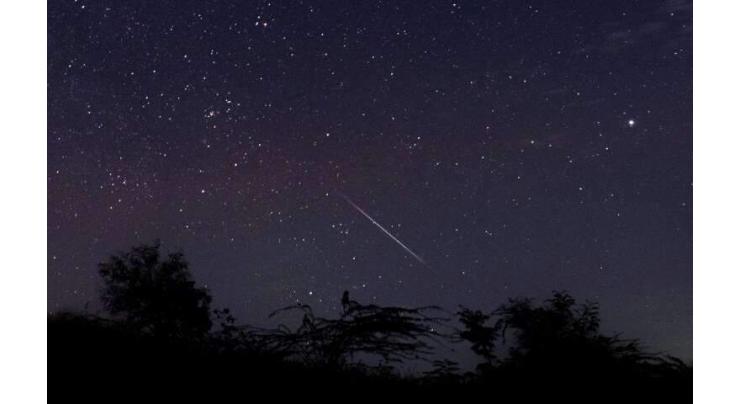
- Home
- Technology
- News
- Russia to Create Center for Monitoring Dangerous Celestial Bodies - Roscosmos Subsidiary
Russia To Create Center For Monitoring Dangerous Celestial Bodies - Roscosmos Subsidiary
Daniyal Sohail Published December 12, 2019 | 07:40 PM

Russia will create a center that will monitor meteoroids, comets and asteroids that have a chance of colliding with planet Earth, Igor Bakaras, a senior official with Roscosmos subsidiary Central Research Institute for Machine Building (TSNIIMASH), said in an interview with Sputnik
"As part of the creation of a monitoring system and information support for the safety of space activities in near-Earth space, we plan to launch the Russian Center for Small Celestial Bodies, whose main task will be to detect and track celestial bodies approaching Earth," Bakaras, who heads the Information and Analytical Center for the Safety of Space Activities in Near-Earth Space at TSNIIMASH, said.
The organization will carry out interdepartmental interaction between Roscosmos, the Russian academy of Sciences, the Russian Ministry for Emergencies, and the Foreign Ministry, as well as sharing information with other nations and international organizations, Bakaras explained.
The center is set to be approved in mid-2020, shortly after which it will go online and run until 2030. It will be operated by Bakaras' Analytical Center, which is a subsidiary of TSNIIMASH.
Asked about whether the center will develop methods destroy or divert bodies headed for our planet, Bakaras said plenty of research needed be done before determining the appropriate counteractive measures.
"Various methods for destroying a threatening celestial body or removing it from orbit � kinetic impact, gravitational tug, rocket engines, solar sails and focused solar energy, and others � are being considered.
Their technical implementation is hampered by the lack of accurate data on the features of the motion of specific asteroids, their structure and physico-chemical properties. Currently, work in these areas is limited mainly to theoretical research and mathematical modeling," Bakaras said.
The idea of having such a center is not new. For years, Boris Shustov, the scientific director of the Institute of Astronomy at the Russian Academy of Sciences, has been advocating the creation of a single organization. According to him, Russia is contributing next to nothing to Earth's security in the solar system, with the United States having pinpointed 99 percent of all known dangerous celestial bodies.
Despite this, Russia has a richer history than most with asteroid collisions. The Tunguska Event in June 1908 is perhaps humanity's closest encounter with asteroid-related devastation. Thankfully, the object exploded above ground in Siberia, flattening miles of forest in the sparsely populated region.
In 2011, the Ural city Chelyabinsk witnessed a bright meteorite blaze across the sky.
Mostly attributed to its colossal size Russia covers about one-sixth of the earth's dry land the country's probability of being struck by falling objects from the sky is higher than that of any other nation.
Related Topics
Recent Stories

Robinson, bowlers help New Zealand go 2-1 up against Pakistan

Shahzeb Chachar to hold khuli kachehri on April 26

Heatwave amid Israel's aggression in Gaza brings new misery, disease risk

Tourism must change, mayor says as Venice launches entry fee

Court adjourns Judicial Complex attack case till May 17

Nasreen Noori’s book ‘Popatan Jahra Khwab’ launched

Wafaqi Mohtasib inspection team visits Excise and taxation office

AJLAC announces 5th Conference titled ‘People’s Mandate: Safeguarding Civil ..

Pak-US officials engage to enhance trade, investment ties

IBCC to promote educational excellence, expand regional presence

Pakistani 'Blue Helmets' serving UN Peacekeeping Mission in DR Congo set to leav ..

Putin says plans to visit China in May
More Stories From Technology
-

Punjab CM inaugurates Pakistan’s first Virtual Women Police Station
2 days ago -

Pro Tips: How to Capture Stunning Portraits with the Aura Light Portrait of vivo V30 5G
3 days ago -

Itel celebrates launch of S24—a new brand identity
4 days ago -

Realme C53 Price Slash: High-Tech Meets High Style at New Low Price!
5 days ago -

Take Charge, Live Free: Empower Your Life with Infinix NOTE 40 Series
7 days ago -

PTA Undertakes Consultation with All Pakistan Network Association (APNA) on Proposed Class Value Add ..
7 days ago
-

Vivo V30 5G: The Perfect Blend of Enhanced Photography and Premium Design
8 days ago -
PITB's Regional Plan 9 invites applications for its newly launched incubation centers in Rawalpindi, ..
9 days ago -

Pakistan calls for enhanced information integrity on digital platforms
10 days ago -

Infinix NOTE 40 Series vs. the Competition: Why It Stands Out
10 days ago -

"Unlock Exceptional Value: The New realme Note 50 with Extended Warranty Now Available in Pakistan!� ..
10 days ago -

Google unveils new AI chips, arm-based processor for data centers
16 days ago










